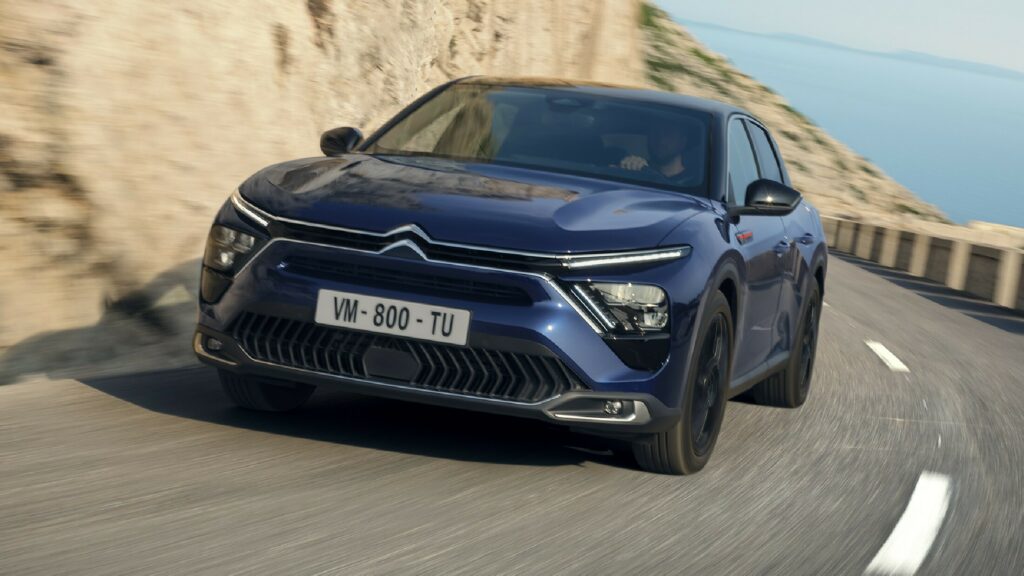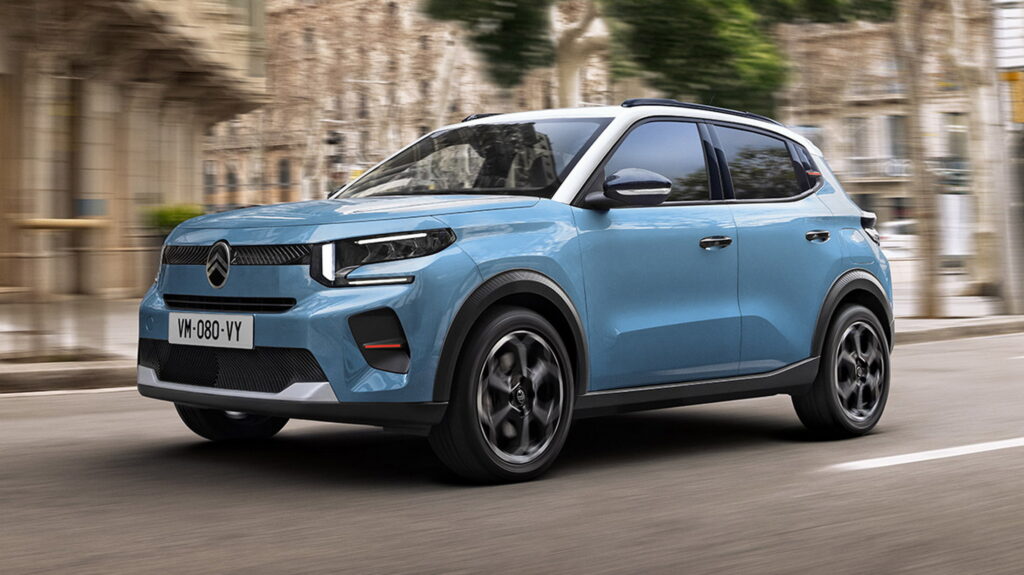- The Citroen boss described the C5 X’s segment as “non-existent”, effectively confirming they’re not planning a successor.
- Citroen will move away from the midsize segment, focusing on subcompact and compact models instead.
- The CEO said it is hard to fill the gap between the Ami and the e-C3 with another EV, as city cars are not profitable.
Citroen CEO, Thierry Koskas, said that the French automaker needs to focus on mainstream segments for the future, possibly limiting its lineup to five or six “well positioned” models. The CEO hinted at the demise of the Citroen C5 X flagship after the current generation, and explained why it is hard to make a profitable city car to sit below the subcompact C3.
The Citroen C5 X debuted in 2021 combining elements from wagons and crossovers in a midsize (D-Segment) body. The model can be seen as a successor of the DS, CX, XM, and C5/C6 bloodline, coming with a spacious cabin and a comfort-focused suspension. While the latest flagship “is not performing badly” in terms of sales, according to Citroen’s CEO, its segment is “non-existent”.
More: Watch The Citroen C5 X’s Advanced Comfort Active Suspension In Action
These comments suggest that the Citroen C5 X won’t live to see another generation, with Stellanti’s budget brand focusing on more popular segments instead. Speaking to Autocar, Thierry Koskas said that Citroen “needs to be in the main segments, not niche segments”, describing the subcompact and compact models as “the heart of the brand.”
The CEO revealed they don’t want to have a wide range in the future, adding that he would be happy with “five or six models, well positioned, really appealing to customers”. Currently, Citroen’s passenger lineup includes the C3, C3 Aircross, C4, C4 X, C5 Aircross, and C5 X, setting aside the LCV-based vans (Berlingo and SpaceTourer) and the fully electric Ami heavy quadricycle.

Citroen C5 X Hypnos Special Edition
As for smaller segments, Koskas believes there is a “big gap for electric objects” between the Ami and the new e-C3, but Citroen has no plans of filling it at the moment: “If you go into the A-segment you would expect to pay less than the B-segment, but the production costs for us are the same.” The inability to make a profitable city car is why Citroen discontinued the C1 in 2022, leaving the bigger C3 and the smaller Ami as indirect successors.
Speaking about the future, the Citroen CEO wants to retain the quirkiness of the brand, introducing “new shapes that do not exist”, and “take risks” in a quest to “shake the market”. The company will also remain the value-focused brand of Stellantis, with Koskas betting on “affordable, simple, and comfortable” cars. This is the main reason why Citroen plans to keep offering ICE and hybrid powertrains alongside EVs for the foreseeable future.





